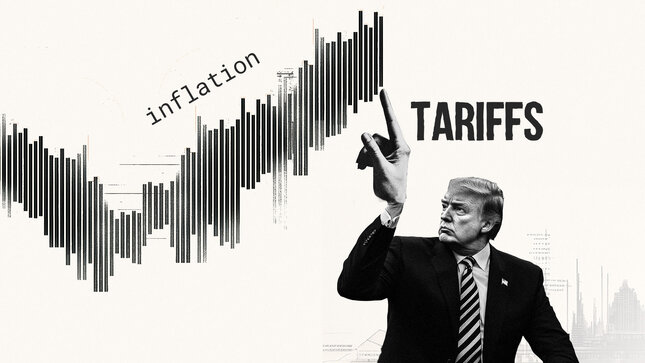- Crude price movement before last five recessions are ambivalent.
- WTI has fallen 66% since January 7 to its lowest price in 18 years.
- Previous sharp drops in oil did not anticipate downturns.
In the last four decades crude oil price movement in the half year before a recession shows little indication the commodity anticipated the coming slowdown.
The National Bureau of Economic Research (NBER) is a private nonprofit research organization that has dated the start and end of US recessions going back to 1857. Its data has become the standard definition of American economic cycles.
NBER recessions and WTI
Of the five recessions the US has experienced going back to 1980, two saw price increases in the half-year prior to the onset and three witnessed declines. In the 1980 recession which began in January and lasted to July, the price for a barrel of West Texas Intermediate (WTI) the US price standard, rose 70.1% from an average of $19.10 in July 1979 to $32.50 in the first month of the downturn.
In the six months prior to second part of what is considered a double-dip recession that started in July 1981 and extended to November 1982, WTI prices fell 5.3%, from $38 in January to $36.
In the next two brief recessions prices moved substantially lower. For the July 1990-March1991 eight month decline WTI dropped 17.7%, from $22.64 to $18.64. For the March to November 2001 recession, also eight months long, prices had fallen 19.6% in the previous half-year from $33.88 to $27.24.
The 2007-2009 recession had been running almost a year before the financial crash in the late quarter of 2008 enveloped the economy. In the six months prior to the start of the downturn in December 2007 WTI had climbed 23.7% from $74.18 to $91.73.
In two of the five recessions WTI prices rose in the first half of the downturn before reversing lower. In 1990 crude rose from $18.64 in July, the first month in the NBER accounting, rose to $35.92 in October. In 2007 WTI soared from $74.18 in December to an average price of $133.93 in June 2008 and then plummeted as the financial crisis entered its obvious manifestation stage.
In three of the above five recessions 1981-82, 2001 and 2007-2009 prices at the finish of the recession were lower than at the start and in 1980 and 1990-1991 they ended higher.
Crude prices in 2020
The 65.9% drop in WTI this year is not the largest price decline on record. That distinction belongs to the 77.1% plunge from $141.59 (daily close) in July 2008 to $32.40 four-and-a-half months later in mid-December. But it is now the second largest decline followed by 59.2% in the last half of 2014 and 43.6% from October 2018 to December. In order for the current crude price decline to break to an all-time record WTI would have to fall below $14.83.
WTI
The collapse in crude prices this year was, until late February, largely a response to the anticipated slowdown in the global economy and oil demand from the economic shutdown in China. Just as the run up prices from October to January was speculation on the success of the US-China trade agreement.
The global spread of the virus and the domestic economic closures that are the main method of dealing with its eruption are expected to wreck demand for crude by an extraordinary amount. But the plunge in crude oil since January is coincident to the universally anticipated global recession not its forerunner.
Information on these pages contains forward-looking statements that involve risks and uncertainties. Markets and instruments profiled on this page are for informational purposes only and should not in any way come across as a recommendation to buy or sell in these assets. You should do your own thorough research before making any investment decisions. FXStreet does not in any way guarantee that this information is free from mistakes, errors, or material misstatements. It also does not guarantee that this information is of a timely nature. Investing in Open Markets involves a great deal of risk, including the loss of all or a portion of your investment, as well as emotional distress. All risks, losses and costs associated with investing, including total loss of principal, are your responsibility. The views and opinions expressed in this article are those of the authors and do not necessarily reflect the official policy or position of FXStreet nor its advertisers. The author will not be held responsible for information that is found at the end of links posted on this page.
If not otherwise explicitly mentioned in the body of the article, at the time of writing, the author has no position in any stock mentioned in this article and no business relationship with any company mentioned. The author has not received compensation for writing this article, other than from FXStreet.
FXStreet and the author do not provide personalized recommendations. The author makes no representations as to the accuracy, completeness, or suitability of this information. FXStreet and the author will not be liable for any errors, omissions or any losses, injuries or damages arising from this information and its display or use. Errors and omissions excepted.
The author and FXStreet are not registered investment advisors and nothing in this article is intended to be investment advice.
Recommended Content
Editors’ Picks

Gold price looks to $3,400 as the record rally extends
Gold price prints a fresh record high above $3,380 in the Asian session on Monday, within reach of the $3,400 level. Uncertainty about US President Donald Trump's tariff policies and concerns over the Fed's independence continue to drive safe-haven flows into Gold price.

EUR/USD rallies hard to reclaim 1.1500 for first time since November 2021
EUR/USD rallies over 1% in Asian trading on Monday as the relentless selling interest in the US Dollar paves the way for the major to clear the 1.1500 threshold for the first time since November 2021. Growing concerns over a US economic recession and the Federal Reserve’s independence continue to exert downward pressure on the USD.

USD/JPY slides further below 141.00 on unabated US Dollar supply
USD/JPY extends sell-off below 141.00 at the start of a new week as trade-related uncertainties and geopolitical risks continue to boost the Japanese Yen at the expense of the US Dollar. The divergent BoJ-Fed expectations further exert pressure on USD amid thin liquidity due to the Easter Monday holiday.

Week ahead: Tariff whiplash, Powell pressure and the Gold rush pause — Buckle up, it’s a macro minefield
It’s a packed week ahead — no shortage of macro catalysts or headline risk. We’ve got a global data deluge coming through: U.S. leading indicators, the UMich sentiment read, Eurozone PMI and consumer confidence, plus Germany’s IFO survey.

Future-proofing portfolios: A playbook for tariff and recession risks
It does seem like we will be talking tariffs for a while. And if tariffs stay — in some shape or form — even after negotiations, we’ll likely be talking about recession too. Higher input costs, persistent inflation, and tighter monetary policy are already weighing on global growth.

The Best brokers to trade EUR/USD
SPONSORED Discover the top brokers for trading EUR/USD in 2025. Our list features brokers with competitive spreads, fast execution, and powerful platforms. Whether you're a beginner or an expert, find the right partner to navigate the dynamic Forex market.